
The Award Winning
Monthly Newsletter of the Anchorage Coin Club
Volume 14, Number 3 March, 2001
March Membership Meeting:
Wednesday March 7th, 2001 Central Lutheran Church 7:00 PM Open, 7:30 PM Meeting

"A Short History of Paper Money"
"Crowns as a Collecting Theme...Why Not?/ Part III"
FROM YOUR EDITORS
When the dust cleared the game was over and last man standing was the young numismatist Corey Rennell. The game was something Robert Hall had discovered in his travels and was based on knowledge of early U.S. commemorative coins. The prize was membership in the Society for U.S. Commemorative Coins. Some of us had our money on Richard Bilak, others on Mark Nagy but Corey got the last true/false question right and won the prize. Corey also won the membership prize, a 1971-S Proof Silver Ike Dollar and was nominated for one of the open board seats to be determined at the March 7th elections. All this was prelude to Corey’s picture appearing in the Anchorage Daily News where Sophie was applying lipstick to his face for his part in the play, ”Curious George”. It’s hard to believe this is the same kid whose opening bid was fifty cents.
Other notable members of this month were Roy Brown who won the door
prize, a 1989-S US Proof set and Carl who won the raffle prize. The
raffle prize was a set of two large size US currency notes, a 1923 $1 silver
certificate and a 1914 $5 Federal Reserve Note. Carl was stunned
to hear his name called as the winner, he did not remember buying any tickets.
Milo had purchased the tickets in Carl’s name while the notes were on display
at Carl’s Jewelers. We left it up to Carl to convince his customers
the raffle was not fixed.
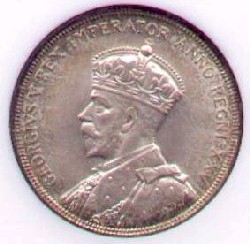 |
Most of the current club officers are making a bid to stay in their seats on the board with no one running against them. One notable exception is Greg Samorajski running for club treasurer, a board seat faithfully occupied by Robert Hall for years. As if she wanted to sweeten us up Greg’s wife showed up with a birthday cake. We all shared cake and celebrated Jonathan Samorajski’s birthday.
For the month of April member Loren Lucason is putting together a coin display of ancient coins for the Loussac library. National Coin Week is April 15th to 21st. In keeping with ANA’s National Coin Week theme of “Faces in Time” the display will show the great diversity of faces on ancient coins from Greek Gods to Roman Caesars. Members are encouraged to submit an ancient coin for the display. Just drop it off at Carl’s, Roy’s, or Loose Change along with a description of the face on the coin before the end of March.
In the month of May (12th and 13th) we will be having a coin show at the Ship Creek Mall where Bill Hamilton’s Loose Change Coin Shop is located. To coincide with the show Mike Robuck will be giving a tour and demonstration at the Alaska Mint one block away. Members are encouraged to get a table at the show and sell some of their extra coins. Loren will be selling some very fine Roman denarii as well as some exotic quarter type coins. There must be some extra coins in your collection that you would like to turn into a little cash. And if you do not want a whole table to yourself contact Bill Hamilton and make arrangements to share a table with another member.
One final note… the YN Donation Auction is coming up at our club’s May
2nd membership meeting. This is a yearly event in which our club members
donate coins and numismatic materials. Proceeds from this auction go to
our club’s YN Program. These proceeds have allowed our club to send deserving
YNs to the ANA Summer Conference in Colorado Springs. Last year saw our
club sending YN Sarah Bilak to this event. In previous years, our YNs have
also been able to attend our coin seminars here in Anchorage taught by
esteemed numismatists from the lower 48 (such as Bill Fivaz, Ken Bressett,
Mike Ellis, JP Morgan, Robert Hoge, Anthony Swiatek, and others). It’s
a worthy cause and we ask for your support in providing numismatic items
needed for this auction…..Your Editors.
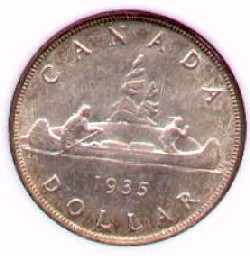 |
MEMBERSHIP NEWS
Schedule of Events for the Month of March
Minutes of the February 21st Board Meeting
The Board meeting was called to order at 7:00 PM.
After a review of club correspondence, the Board addressed the issue of endorsements for ANA (American Numismatic Association) Board of Governors, ANA Vice-President, and ANA President nominations. At this time the club has received requests from three senior member ANA members seeking an endorsement from our coin club. The Board has made the decision to wait until our club membership meeting on March 7th to get approval from the members for any endorsement requests received up to that date.
The next order of business was to review our yearly elections for Anchorage Coin Club Board officers. At this time the following members have decided to run:
The third Board seat, as per our club by-laws, is filled by the previous President of the Anchorage Coin Club. This seat is presently filled by Loren Lucason.
At this time, these are the slate of candidates who have agreed to serve
on our club’s Board. All candidates are presently running unopposed. Any
members wishing to run for the position of President, Vice President, Secretary,
Treasurer, and Board seat still has time to “toss their hat in the ring”
right up to election day on March 7th when we have our club membership
meeting. Members in attendance will vote that evening for club officers
on the Board.
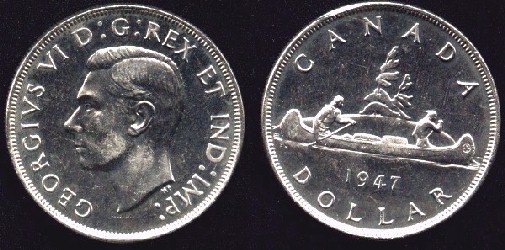 |
The Board then reviewed the issue of coin shows.
The next coin show will be held on the weekend of May 12th and 13that Ship Creek Mall in downtown Anchorage. We are going to coincide the coin show with our May 12th YN meeting in which YNs and members will be given an opportunity to visit the Alaska Mint to see how their coins are minted. Members and interested parties wishing to get coin tables can contact Bill Hamilton (Ph# 277-6110).
Also discussed was the feasibility of the Anchorage Coin Club organizing a big coin show and auction at one of the hotels here in town. There was much discussion on how the club can economically afford such a show. It was decided to form a committee to look at a methodology and business plan for such a show. This will be discussed at our March 7th membership meeting.
Larry Nakata brought up the yearly YN Donation Auction, which is traditionally held at our club’s May membership meeting. Members donate coins and numismatic materials for this auction. Proceeds from this auction go to our club’s YN Program. Moneys from this program have allowed YNs to attend the ANA Summer Conference in Colorado Springs and coin seminars that our club organizes here in Anchorage. Members wishing to donate items for the YN Donation Auction can contact Larry Nakata (daytime: 269-5603/ evenings: 563-1729), drop the donated items to our coin dealers who advertise in our club’s newsletter, or bring them to the membership or YN meetings.
As there was no further business, the Board meeting was adjourned at
7:40 PM.
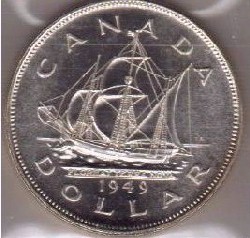 |
Our YN meeting on February 9th was well attended by a number of YNs and their parents. Those YNs who came in just before 7 PM got to see a pretty good fireworks display that evening courtesy of the Fur Rendezvous events here in Anchorage. Pizza, chips, and soda pop were enjoyed by all.
The main presentation that evening was on the subject of “Grading Paper Currency”. After giving a brief history on paper currency, the YNs (and their parents) reviewed standards for grading as prepared by the Grading Committee of the International Bank Note Society. It’s a pretty good grading guide that describes what to look for in paper notes.
After reviewing the descriptions, the YNs then looked at a number of $1 U.S. banknotes and their grades. These notes ranged from Continental Currency to State Bank Notes to Civil War currency to our present US Federal Notes. Grades ranged from Poor (or AG condition) to CU (Crisp Uncirculated) notes.
A grading exercise then followed in which the YNs graded some 15 World and US paper currency notes. These notes included Reichmark notes from World War II, Japanese Occupational Notes from World War II, various World paper currency notes, and some older US currency notes. The YNs were then given these paper currency notes to take home and add to their collections.The YN door prize, a 1986 US Liberty Two Coin Set, was won by YN Steven Long.
Loren Lucason will be making a presentation on “Ancient Coins for the YN/ Part II” at our next YN meeting on March 9th. YNs coming to this meeting will also work on putting together our coin club’s display of “Ancient Coins”. This display will be at the Loussac Library the month of April as our club’s effort to commemorate National Coin Week.
Hope to see a lot of YNs at the March 9th (Friday) YN meeting.
We also want to encourage YNs to attend our club’s regular membership
meeting, which is held the first Wednesday of the month at the Central
Lutheran Church. We always give away a door prize and a membership prize
at the membership meetings. We always have a nice coin auction at these
meetings. For your information the next regular membership meeting will
be held on Wednesday/ March 7th……Larry Nakata.
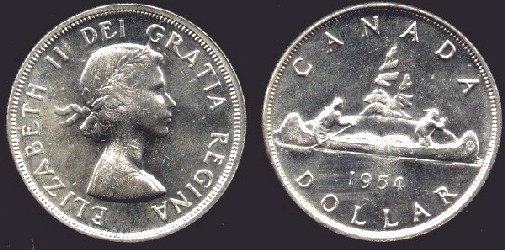 |
A SHORT HISTORY OF PAPER MONEY
The first known records of paper money comes from the time of Marco Polo. In his journey to China in the 13th Century, Marco Polo reported use of paper money in China used by the Mongol Dynasty (the Yuan Dynasty).
There are known examples of Chinese paper money in existence today that are dated back to the 14th Century Ming Dynasty.
In Europe, paper money was first used in the 15th Century for emergency only. An example of this would be in 1483 when historical records showed the Spaniards issuing paper notes, called “siege notes”, at a time when their country was invaded by the Moors. While historical records tell of these notes, none still exist today indicating the Spaniards destroyed these notes after the emergency went away.
The use of permanent paper money was introduced in Sweden in 1644.
The idea then caught on with the rest of the European countries.
It has evolved since that time to what we see today…….Larry Nakata.
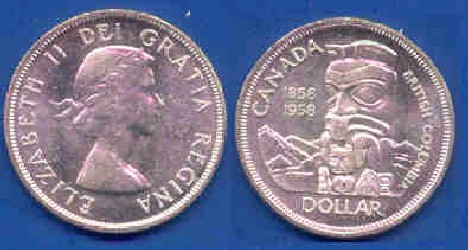 |
The following grading guide is an adaptation work prepared under the guidance of the Grading Committee of the International Bank Note Society. This grading guide is also posted in two reference books: “United States Paper Money” by Chester Krause and Robert Lemke and “Standard Catalog of World Paper Money” by Albert Pick.
Crisp Uncirculated (CU): A perfectly preserved note, never mishandled by the issuing authority, a bank teller, the public or collector. Paper is clean and firm, without discoloration. Corners are sharp and square, without any evidence of rounding. (Rounded corners are often a tell-tale sign of a cleaned or “doctored note”. An uncirculated note will have its original, natural sheen.
About Uncirculated (AU): A virtually perfect note, with some minor handling. May show evidence of bank counting folds at a corner or one light fold through the center, but not both. An AU note cannot be creased, a crease being a hard fold which has usually “broken” the surface of the note. Paper is clean and bright with original sheen. Corners are not rounded.
Extremely Fine (XF): A very attractive note, with light handling. May have a maximum of three light folds or one strong crease. Paper is clean and bright with original sheen. Corners may show only the slightest evidence of rounding. There may also be the slightest sign of wear where a fold meets the edge.
Very Fine (VF): An attractive note, but with more evidence of handling and wear. May have a number of folds both vertically and horizontally. Paper may have minimal dirt, or possible color smudging. Paper itself is still relatively crisp and not floppy. There are no tears into the border area, although the edges do show slight wear. Corners also show wear but not full rounding.
Fine: A note which shows considerable circulation, with many folds, creases, and wrinkling. Paper is not excessively dirty but may have some softness. Edges may show much handling, with minor tears in the border area. Tears may not extend into the design. There will be no center hole because of excessive folding. Colors are clear but not very bright. A staple hole or two would not be considered unusual wear in a Fine note. Overall appearance is still on the desirable side.
Very Good (VG): A well-used note, abused but still intact. Corners may have much wear and rounding, tiny nicks, tears may extend into the design, some discoloration may be present, staining may have occurred, and a small hole may be see at the center from excessive folding.
Staple and pinholes are usually present, and the note itself is quite limp but no pieces of the note are missing. A note in VG condition may still have an overall but not unattractive appearance.
Good (G): A well-worn and heavily-used note. Normal damage from prolonged circulation will include strong multiple folds and creases, stains, pinholes and/or staple holes, dirt, discoloration, edge tears, center hole, rounded corners, and an overall unattractive appearance. No large pieces of the note may be missing. Graffiti is commonly seen on notes in G condition.
Fair: A totally limp, dirty, and very well-used note. Large pieces may be half torn off or missing besides the defects mentioned under the Good category. Tears will be larger, obscured portions of the note will be bigger.
Poor: A “rag” with severe damage because of wear, staining,
pieces missing, graffiti, larger holes. May have tape holding pieces of
the note together. Trimming may have taken place to remove rough edges.
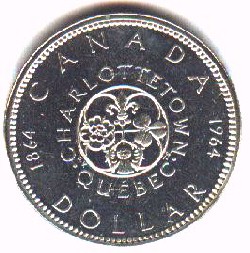 |
“CROWNS AS A COLLECTING THEME…WHY NOT? / PART TWO” by Mike Orr (Member# 91)
In the last article I discussed what I consider a crown to be and sorted through the major U.S. types one could collect. This time I would like to turn my attention to our neighbor Canada. After Confederation in 1858 Canada set about the task of creating a monetary system based basically on the metric system used in the US. Thus, they had their first coins struck for them in England from a large cent to a half dollar…but not dollars. Meanwhile in the US we were legislating bi-metalism due to the huge Comstock silver found in Nevada. Canada did not have a silver dollar until 1911 and then it was only a specimen coin issued for sets. The last information I have is that only two specimens of this coin exists. One is in the National Collection and the other sold at auction in 1979 for $160,000. This makes it scarcer than the US 1804 dollar.
The next appearance of the dollar was not until 1935. This is where collecting Canadian crowns begin. The obverse was changed to commemorate the 25th anniversary of the reign of King George V with the standard Voyaguer reverse. This coin is very affordable. Type I starts at $22 in VF and goes to $180 in choice uncirculated. Type II is a one year type as well. The obverse design was changed back to the standard George V wording with a standard Voyaguer reverse. They range in price from $15 in VF to $90 in choice uncirculated. If you really want a challenge a high grade specimen coin can cost over $3000.
In 1937 Edward VIII abdicated his throne to his brother George VI. The reign began in 1937 and ran to 1952. This necessitated the next change in the coinage. Type III dollars were struck until 1947 in the familiar Voyaguer style except for 1939. This coin is also very affordable. It runs from $12- $110 in VF up to $32- $290 in uncirculated. The more expensive coins are those struck for specimen sets. They run from $1300 in choice uncirculated to $3000. In 1939 a special commemorative dollar was struck for the Royal Visit. By this time most of Europe was going up in smoke while Hitler started his march of destruction. Type IV dollars are the least expensive crown in this ten year spread. They started at $7 in VF and go to $32 in choice uncirculated. The exception is the specimen dollar (struck just for collectors) which retails around $1300.
Another change occurred in 1947. The British Empire lost India as they gained independence that year. The wording Emperor of India had to be removed from the legend of all British coinage but there was not time to do this that year. Thus, a maple leaf was added to the die to denote the loss. Type V coins are somewhat more expensive. They start at $125 in VF and go to $550 in choice uncirculated. Specimen coins retail at about $650. In 1948 the new obverse reflected the change of the loss of India. Type VI coins were struck from 1948-52 except 1949. The first year is the most expensive. They run from $550 in VF to $2000 in choice uncirculated. Specimens run around $7000. One would probably look at the 1950-52 coins to obtain this type. These coins run from $7 - $10 in VF to around $30+ in choice uncirculated except the arnprior varieties which run from 3-4 times this level. The last type for the George VI series is the Type VII dollar struck to commemorate the entry of New Foundland into the Canadian Confederation. Good numbers of these coins have survived so they are not expensive. They start at $10 in VF and go to $36 in choice uncirculated. Specimens run into the $4000 level.
The death of George VI in the early 50’s saw the monarchy pass to Elizabeth II where it has been ever since. Due to limitations in the length of this article I shall only cover crowns of this reign until silver was removed from circulation in 1968. I shall leave the base metal and non-circulating crowns for another article. In 1953 the Voyaguer style was continued. Type VIII crowns feature an early portrait of Elizabeth II. The coinage of Britain and its Commonwealth ages the monarch as they grow older, thus producing new types as the coinage progresses. Elizabeth II’s portrait has changed many times in her long reign. This type was struck from 1953-63 except 1958. The type collector has many choices here of which none are very expensive. They start at $4 in VF and go to $80 in choice uncirculated except for arnpriors which are nominally more expensive. 1958 dollars make up Type IX and are very affordable. They were struck to commemorate British Columbia and feature a totem pole on the reverse. They range from $7 in VF and reach $30 in choice uncirculated from proof like sets. The better coins from Canada, starting in the late 50’s and continuing today, come from their proof like mint sets. I consider them similar to the quality of the US Special Mint Sets issued for 1965, 66, and 67. From the outset, quality was an issue for Canada with their mint generated products.
The next crown is the Type X issued to commemorate the Confederation Meeting at Charlottetown in 1864 and dated 1964. The reverse features a circled crest with the wording Charlottetown Quebec surrounding. Prices start $4 in VF and go to $7 in choice uncirculated. The next Type XI crown features a new effigy of the queen and runs only two years, 1965 and 66. They start at $4 in VF and go to $25 in choice uncirculated. One coin stands out of this type. The small bead 1966 starts at $750 and reaches the $1500 level in choice uncirculated. Only 485 pieces are known of this coin. The last coin covered in this article is Type XII and was struck to commemorate one years of confederation. The coin features a goose for the reverse of the dollar. In fact, the sets featured new reverses for all of the coins from the cent to the dollar. Different animals of Canada were featured on each coin. The exception was the twenty dollar gold piece which featured the effigy of the queen and the Crest of Canada on the reverse.
One peculiar aspect for collectors was the restriction of this country on gold ownership. The sets were not allowed to be sold here so people could simply go there to purchase them and come back to market them accordingly. This was a mild example of civil disobedience of a law that made no sense to the general public. Prohibition of gold ownership was as likely to succeed the same as prohibition of liquor did in the 20’s. Now gold is allowed for part of a retirement portfolio and our government is in the business of producing these coins. If you can’t beat them, join them.
This concludes the first part of Canadian crowns. I’ll finish up the next part in an article to follow.
Until then good health and good hunting…..Mike Orr.
Club Archivist/ Photographer
Robin Sisler
DUES
The Anchorage Coin Club is a non-profit organization formed to provide information, education, and a meeting place for individuals having an interest in numismatics.
Correspondence Address: Anchorage Coin Club, P.O. Box 230169, Anchorage,
Alaska 99523
Return to: "Top of the Newsletter"